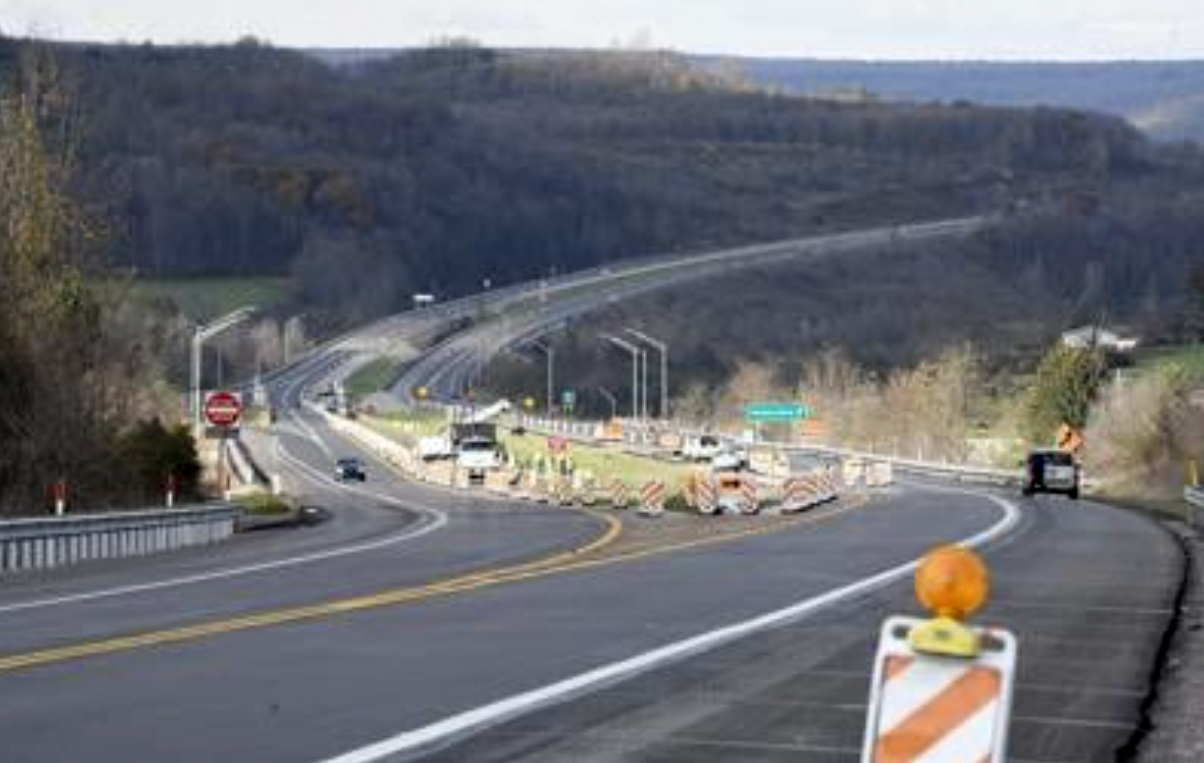


SOMERSET, Pa. – With $87 million in new Appalachian Development Highway System dollars flowing into Pennsylvania over the next five years, state transportation officials plan to focus it on finishing three corridors – U.S. Route 219 in Somerset County, an Interstate 99 connection and the Central Susquehanna Valley Thruway.
Given the length of time all three projects have been on Pennsylvania’s wish list, the federal infrastructure bill passed late last year is expected to bring decades of efforts in three rural regions to the finish line in the years ahead, PennDOT Deputy Secretary for Planning Larry Shifflet said.
“In April, I’ll be with (PennDOT) for 30 years and all three have been around in some sort of fashion the entire time, Shifflet said. “So it’s exciting to see the light at the end of the tunnel.”
For the Johnstown and Somerset regions, the project will connect a four-lane Route 219 to Interstate 68 “and the rest of the country” – bolstering economic opportunities in the process, he said.
Through bipartisan support in the Senate, the Biden administration’s Infrastructure Investment and Jobs Act was passed into law in November – with advancing the Appalachian Highway Development System ystem toward completion one of several key focuses.
U.S. Sen Bob Casey Jr, a steadfast supporter of the bill, and Somerset County officials both announced late last year that the infrastructure plan would help enable Route 219’s Meyersdale-to-Salisbury four-lane section to see completion by 2031.
But Tuesday marked the first day that officials from PennDOT, which oversees several of the funding pots needed for highway projects, spoke in detail about their plans for the Appalachian Highway dollars, which could also include a portion of a system-wide $500 million funding pool.
‘We’re looking forward to working toward getting that final (portion) completed,” Shifflet said of Route 219.
The project is currently partway through a preliminary design. Another multi-year step involving final design planning, including right-of-way acquisitions, must also occur to select a final path from Meyersdale to the Maryland line before the project could proceed toward construction.
Two additional projects are a bit more shovel- ready, Shifflet said. Tentatively scheduled for a 2023 bid, the I-80 High Speed Interchange project will allow travelers to better access east-west Interstate 80 from Interstate 99 in Centre County.
And to the east, the first of three upcoming sections of the Central Susquehanna Valley Thruway are scheduled to go to bid later this year, he said.
That project will carry traffic over the Susquehanna River through parts of Snyder, Union and Northumberland counties – with a 4,600-foot-long bridge already set to debut by fall.
Casey said the infrastructure bill is enabling states such as Pennsylvania to put a focus on rural regions underserved by highways – and the economic benefits they bring. Over the coming years, the new injection of transportation funding will benefit not only the Appalachian Highway Development System, but also bridges, roads and other priorities across a large swath of Pennsylvania that sit outside the big cities. “This is only a start,” Casey said of the Appalachian Highway Development System funds, “of this investment in rural communities and roads and highways in those communities.”